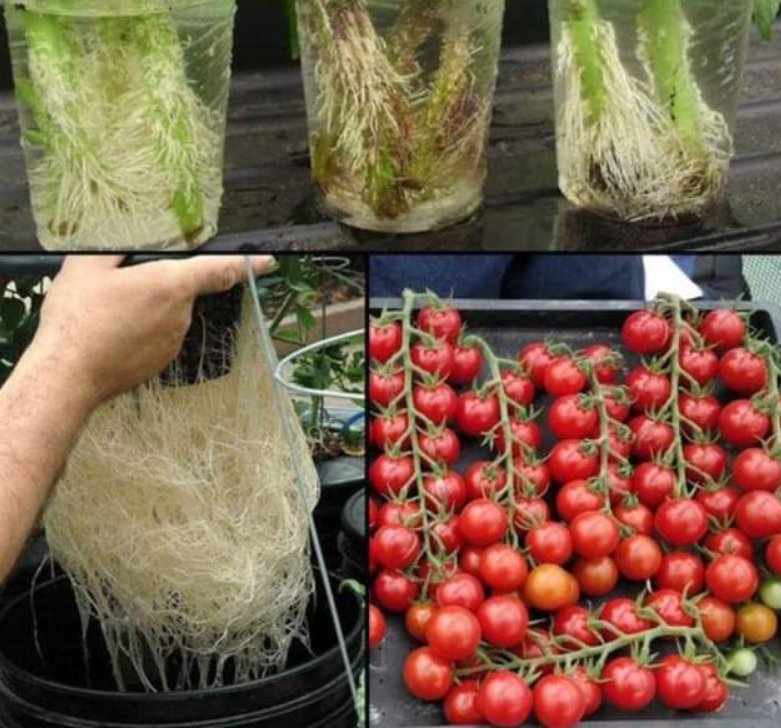ADVERTISEMENT
3. Plant Your Tomatoes
After setting up your hydroponic system, it’s time to plant your tomatoes. Follow these steps:
- Choose the Right Tomato Variety: Some varieties of tomatoes, like cherry tomatoes or compact determinate varieties, are better suited for hydroponic systems, especially in small spaces.
- Start with Seedlings or Seeds: You can start tomatoes from seeds, but it’s easier to begin with small tomato seedlings. Plant them in the net pots with a small amount of hydroponic medium (such as perlite or clay pellets) to anchor the roots.
- Place the Seedlings in the System: Insert the net pots into the holes of your container so the tomato roots hang into the nutrient solution below. Ensure that the roots are submerged but not completely submerged in water.
4. Maintain the Hydroponic System
To ensure your tomatoes grow well, you’ll need to regularly check and maintain your hydroponic system.
- Nutrient Solution: Monitor the nutrient solution’s pH level and adjust it as needed. Tomato plants typically thrive in a pH range of 5.5 to 6.5. You can buy a pH testing kit to check the levels and adjust with pH up or down solutions.
- Water Level: Keep an eye on the water level in your system. As the plants grow, they may use more water, so ensure the solution doesn’t run low.
- Air Circulation: Ensure that the roots are getting enough oxygen by running the air pump continuously. This is especially important in a DWC system to avoid root rot.
- Light: Ensure your tomato plants receive the necessary amount of light. Tomatoes need about 12-16 hours of light a day, and you may need to supplement natural sunlight with artificial grow lights.
5. Harvest Your Tomatoes
Once your tomato plants start flowering and setting fruit, it won’t be long before they’re ready for harvest. Depending on the variety, tomatoes can take anywhere from 50 to 85 days to mature.
- Harvest the Tomatoes: Pick the tomatoes when they’re fully ripe and have a deep color (red, yellow, or orange, depending on the variety). Gently twist the fruit to remove it from the vine.
Tips for Success:
- Pollination: Since hydroponic tomatoes are often grown indoors or in controlled environments, they may need some help with pollination. Gently shake the plants to encourage the transfer of pollen, or use a small paintbrush to transfer pollen from flower to flower.
- Temperature and Humidity: Tomatoes prefer temperatures between 70-85°F (21-29°C) and humidity levels around 50-70%. Make sure your grow room or area maintains these conditions for optimal growth.
- Pruning: Regularly prune your tomato plants to remove any dead leaves or suckers (small shoots that grow between the main stem and branches). This will allow the plant to focus on producing fruit.
Conclusion:
Growing tomatoes without soil through hydroponics is an exciting and rewarding way to enjoy homegrown tomatoes year-round. While it may seem like a complex process, with the right setup and a bit of attention, you can produce a bountiful harvest of fresh, flavorful tomatoes.
By following this guide, you’ll be well on your way to mastering hydroponic gardening and enjoying delicious tomatoes grown without the need for soil. Happy growing!
